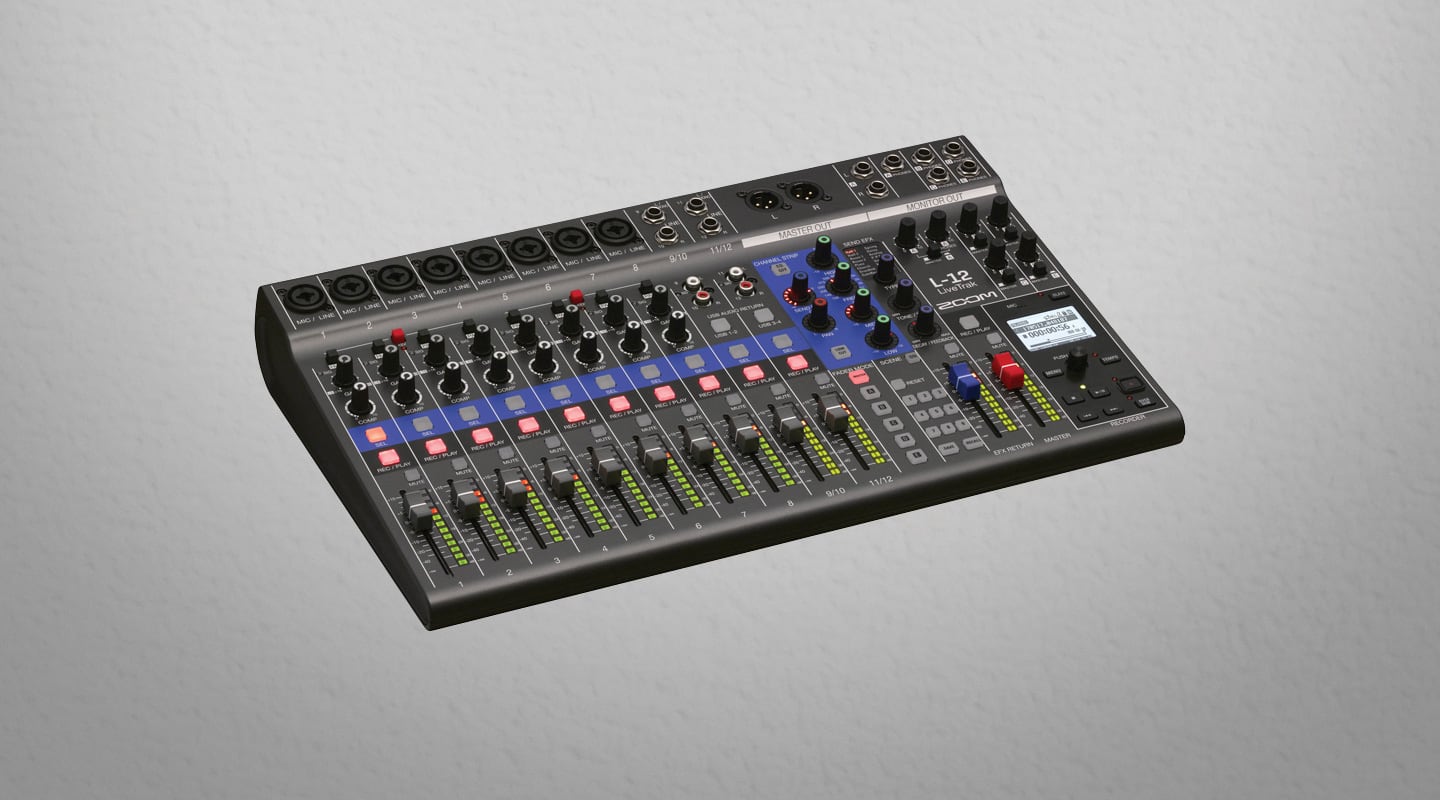
Review: Zoom Livetrak L-12
Zoom has brought the portastudio form factor back from being an anachronism by turning it into ‘all the things’.
As soon as the LiveTrak L-12 was shelled from its packaging, the office immediately transitioned into a battle over portastudio pasts. Age is the real winner in this game, distinguished by the format you first started recording on — whether rolls of tapes, cassettes, ZIP disks or SD cards — but somewhere along the way most recordists have touched some device with a portastudio form factor. If you haven’t, Zoom now has you covered.
FIVE IN ONE
While a hard disk portastudio isn’t exactly top of my wishlist when it comes to review gear, having just struggled through a firmware update on a $4000 audio interface, the little self-contained Zoom was suddenly looking a whole lot more attractive.
You really have to dig deep to understand the LiveTrak; while it looks like a ‘portastudio’, it’s actually a ‘five-in-one’ contraption.
Firstly, there’s the portastudio bit. Record 12 channels (eight mono, two stereo) direct to an onboard SD card. Great. Then there’s mode two; you can use it as a live console. The third approach is to combine those two functions to record a live show or rehearsal. There’s also the option to use it as a straight up audio interface for your computer. Lastly, it has a class compliant mode so you can use it as an interface for your iOS device. Technically, there’s a sixth function, which is as a huge SD card reader, but let’s not dwell on that.
While it’s called LiveTrak, it feels like the opposite of the current crop of digital live mixers with recording functionality added on top. Rather, it feels like a portastudio you can take on the road.
Getting around all these features isn’t difficult. Switching between some modes requires a reboot, but that’s typically only to shift between recording platforms; SD card, USB drive or computer.
At the centre of it all is Zoom’s classic single push-knob menu system. If you’ve ever used any Zoom device from the H4 onwards, there’s not much that won’t be familiar. It’s still a right pain in the butt to rename anything, but all else is easily manageable.
There’s enough inputs for a simple band setup. There are eight mic/line preamps across the top, the first two are also switchable to Hi-Z via a selector switch, which is used as a pad on the other six channels. Phantom power is switchable in groups of four. There’s 60dB of gain on each mic preamp, and the remaining two stereo channels are fixed gain line inputs. Those last two also double as stereo audio returns when in audio interface mode.
NEED TO KNOW
Zoom Livetrak L-12
Portable Multi-Track Recorder

ONE, TWO, ZOOM
Getting going is pretty straightforward. You just cycle each channel’s record/play arm button until it lights red, toggle the big record button, then hit play. Once you’re done, cycle each channel’s record/play button again to light up green for playback. If you want to overdub anything or record on a vacant channel in that project, make sure you hit the overdub button first. Simply hitting the main record button again will start a fresh project.
Zoom says these preamps are its best yet, better than the F4 and F8 field recorders, which Greg Simmons raved about in his review. Having followed the trajectory of Zoom’s preamps, I’ve been very impressed with the later models and found these very capable, too.
Each channel has a simple one-knob compressor, which both compresses and ramps up the makeup gain. When used moderately, its slower attack is widely useable. A little bit on most tracks helped the sound come together. There’s also a central channel strip control section, which allows you to dial in tones with a mid-sweepable, three-band EQ, a high pass filter, a send for the effects engine, and pan. All of the controls have an LED ring around them, storing and recalling each channel’s setting automatically. I would have liked to see a phase flip switch added to the EQ section. Especially given you can mix down to stereo on the unit. The effects engine has a total of 13 reverbs and three delays, with two controls that manage either time or tone, and decay or feedback. All of it is really useful; the effects engine is a lot better than something you’d find on a cheap Mackie, and the EQ cuts some nice broad shapes.

SETTING THE SCENE
Back at the beginning, when I was prying open the packaging, there was the unreal promise I had a mind-bending bargain in my hands. Specifically due to the six fader banks and a scene recall feature. I plugged it in and held my breath. Could there possibly be flying faders in a humble portastudio? Would they snap into life? … Nope. Sure, it’s got LEDs down the side that let you know your last fader setting, but it’s one of those situations where you have to manually recall your last position before moving forward with your mix. It was definitely too much to ask of a $1000 device.
It’s the bit I don’t love about the LiveTrak, and it’s really due to Zoom trying to pack in too much stuff, not what it’s left out. In the centre section there are two sets of buttons; one for switching fader banks, and another for scene recalls. I would rather have forgone the second of these and added one more LED-rimmed encoder for each channel. Let me explain.
The LiveTrak is a small-format mixer. It won’t be used to mix the sort of gig requiring loads of pre-production and different settings for each song. Some fader rides, EQ nudges, FX send changes, and slight compression adjustments; that’s it. Also, without flying faders, scene recall is essentially useless for dialling in changes on the fly. You may as well make it another item in your menu, which it could have been. It almost makes a simple device too confusing for its intended use.
The other part, fader recall, is designed to give you discrete monitor mixes for each of the five onboard headphone amps, as well as your master mix. The problem is that while the whole LED indicator/manual pickup system works, it’s clunky, easy to get lost, and not very fast to operate. What would have been better is one more LED-rimmed encoder per channel that let you flip between monitor sends, keeping your last settings intact. It’s a workflow issue, but at least Zoom has given you the five headphone amps to begin with. It means Zoom’s version of the portastudio can cover your Nebraska-esque demos or a full ensemble live recording.
While the LiveTrak is able to record in 96k, it’s limited to recording onto SD cards. It will also disable send FX, EQs and overdubbing capabilities. You have all the functions available to you when working 24-bit/48k. You can mix down your session to the stereo master, and export your session to a USB drive, too. It also seemed that the only way I could bounce a project and continue to work on it was to export the bounced file to USB, then reimport it onto a stereo channel in a new project. There didn’t seem to be a way to do it internally, though this workaround takes less than a minute. Way quicker and simpler than lining up tape machines.
UNDER THE FACE OF IT
With the LiveTrak, Zoom is yet again pushing the boundaries of what’s possible in a given format for a price. If you’re in the market for a sub-$1000, multi-channel audio interface, you’re also buying a mini live mixer and a standalone recorder. Any musician/recordist is going to get lots of use out of it, and it will perfectly suit those looking to branch out into podcasting, or livestreaming to YouTube.













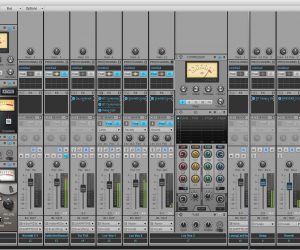
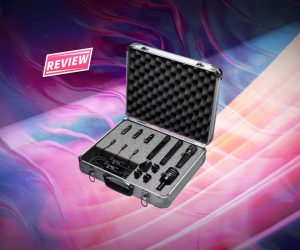
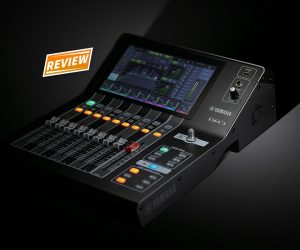






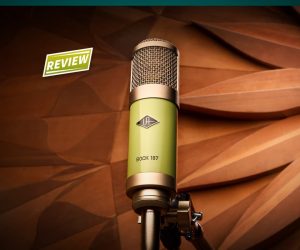

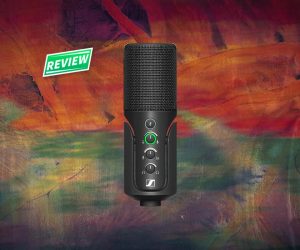


RESPONSES